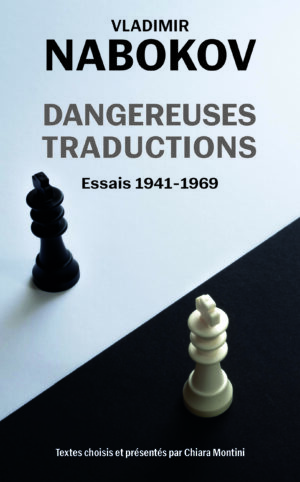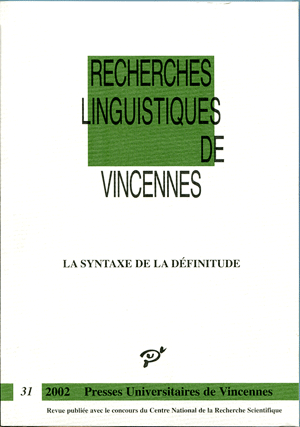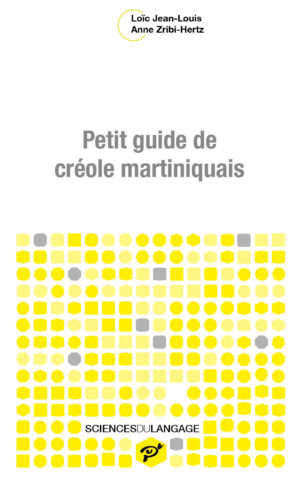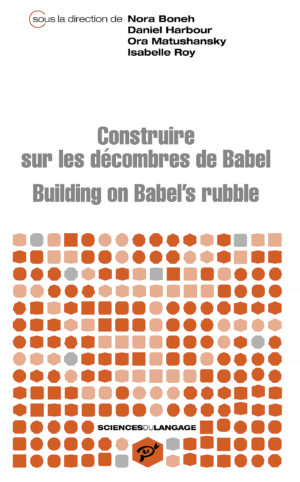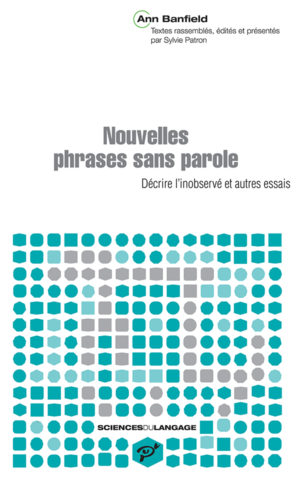Enoch Oladé ABOH : « La morphosyntaxe de la périphérie gauche nominale »
Cet article développe une analyse de la périphérie gauche nominale (PGN) éclatée où les traits de spécificité et de nombre sont les propriétés de projections fonctionnelles distinctes. Le DP représente la projection la plus haute du système. C’est l’interface entre l’univers du discours et l’expression nominale où est réalisé le trait discursif [±spécifique]. En revanche, NumP constitue la projection la plus basse du système et sert de charnière entre le système D et le système flexionnel nominal. C’est le point d’ancrage du trait de nombre et du trait référentiel [±défini] qui est repris au sein du système flexionnel (SP). Selon cette approche, nous proposons que l’interprétation spécifique est un effet sémantique qui découle du mouvement de SP vers la PGN, c’est-à-dire vers SpecNumP et SpecDP. De même, nous montrons que, dans les DP possessifs, le possédé ne peut être interprété comme spécifique que si l’ensemble de la structure prédicative incluant le possesseur et le possédé monte vers la PGN. En supposant que les phrases relatives manifestent une structure de complémentation où le système D projette au-dessus du CP, nous concluons que le groupe nominal relativisé est interprété comme spécifique lorsque la proposition relative monte vers la PGN en syntaxe. À la différence des relatives, les factives ne possèdent pas de système D. Ces syntagmes réalisent un CP dont la position SpecCP est occupée par un DP complet.
Nadira ALJOVIC : « Long adjectival inflection and specificity in serbo-croatian »
Cette article s’intéresse aux deux formes, courte et longue, des adjectifs épithètes serbo-croates. Il vise à montrer que l’opposition formelle ‘court/long’ est corrélée à l’opposition sémantique entre deux interprétations, non-spécifique vs. spécifique, d’un groupe nominal. L’article examine ce que peut être la source de la flexion longue, en proposant l’hypothèse qu’un adjectif occupant le Spécificateur d’une certaine tête fonctionnelle du domaine nominal apparaîtra avec une flexion supplémentaire : une flexion longue. La discussion finale concerne le parallélisme formel entre la flexion pronominale et la flexion adjectivale longue, suggérant que toutes les deux sont liées à la même projection nominale : DP.
Mario BARRA-JOVER : « Datif, possessif, article défini, ou comment se passer de la possession inaliénable »
Le nombre de contextes permettant la présence d’un article à la place d’un possessif dans les cas du type Jean lève la jambe peut changer d’une langue à l’autre (les cas du type Jean l’a pris par la main étant de nature différente). Cette variation rend difficile toute explication fondée sur les traits encyclopédiques du nom impliqué. À partir du problème contrastif posé par l’anglais, l’espagnol et le français, est proposée une hypothèse qui retient comme facteur explicatif la distribution du datif. Lorsqu’une langue, comme c’est le cas de l’anglais, ne possède pas de datif (dans le sens morphologique du terme), la construction avec article n’est pas possible. Lorsqu’une langue possède un datif, la distribution de l’article dépend de la capacité des verbes à intégrer comme argument interne un argument locatif exprimant un rapport de contiguïté. Le verbe français peut le faire pour les prédicats dont la grille thématique permet l’existence d’un But, tandis que les verbes espagnols ne sont pas soumis à cette contrainte. Ceci expliquerait l’abondance de contextes accessibles à l’article en espagnol.
Anne DALADIER : « Definiteness in amwi : grammaticalization and syntax »
L’amwi, langue non flexionnelle du groupe mon-khmer, a une “accentuation syntaxique” qui peut s’appliquer à un sujet et un ou plusieurs objets et avec laquelle s’appliquent différentes formes de détermination pour exprimer des valeurs de définitude : a) pronoms clitiques de troisième personne réutilisés comme déterminants-clitiques, b) déterminants-clitiques associés à des pronoms indéfinis ou à des ordinaux-classificateurs, c) éléments aspectuels associés à des emplois “verbaux” et déictiques de noms de temps. Un sujet ou un objet lexical accentué syntaxiquement est obligatoirement défini. Différentes valeurs de définitude font intervenir de plusieurs façons l’ensemble de la construction syntaxique d’une phrase.
Marie-Laurence KNITTEL : « Existe-t-il un DP en turc ? »
Dans cet article, nous montrons que le turc est une langue sans projection DP. Nous fondons notre analyse sur le fait que ni les articles ni les démonstratifs ne peuvent être analysés comme des têtes D°, et sur l’absence de complémenteur dans cette langue. Nous présentons ensuite la structure du SN turc, où à chaque niveau de complexité morphosyntaxique correspond un type d’interprétation particulier : référence à un type, indéfinitude, définitude.
Katia PAYKIN, Marleen VAN PETEGHEM : « La définitude dans une langue sans article : le cas du russe »
Le russe est une langue sans articles et n’exprime donc pas la définitude à l’aide de déterminants. Néanmoins, plusieurs phénomènes grammaticaux ont été signalés dans la littérature comme compensant l’absence d’articles en russe. Le but de cet article est d’examiner tous ces phénomènes pour analyser leur rapport avec la définitude. Sont examinés successivement l’ordre des mots et la prosodie, les cas en interaction avec l’aspect et l’accord verbal. Il ressort de cette étude que tous ces procédés mènent à un marquage du SN indéfini, alors que le SN défini reste non marqué. Cela dit, à part certaines oppositions casuelles, aucun de ces marquages n’entretient de rapport univoque avec l’indéfinitude. Seul l’emploi du génitif avec un argument du verbe donne systématiquement lieu à une interprétation indéfinie, par opposition à l’accusatif et au nominatif dans les mêmes contextes, qui entraînent une interprétation plutôt définie. L’utilisation de ce génitif à valeur indéfinie n’est toutefois possible qu’avec des noms de masse, des indéfinis pluriels et des SN en contexte négatif, ce qui montre que l’indéfinitude exprimée par le génitif n’est pas celle exprimée par l’article indéfini ‘un’ dans les langues à article. Elle concerne plutôt l’expression d’une quantité indéfinie ou la négation de l’existence du référent du SN.
Lélia PICABIA : « La primauté du temps pour l’interprétation du sujet : le cas du lari »
Ce travail propose une étude de la composition morphologique des syntagmes nominaux définis en lari (langue bantoue du Congo), selon leur distribution dans la proposition (position sujet versus position régime). La conclusion la plus saillante est qu’en position sujet, si la proposition comporte des morphèmes de temps, le syntagme nominal est toujours défini, même s’il ne comporte aucun déterminant approprié. L’hypothèse descriptive avancée est que le temps de la proposition légitime l’interprétation définie du sujet.
Anne ZRIBI-HERTZ : « The dp hypothesis and the syntax of identification »
Cet article examine le problème de la localisation de la “définitude”, c’est-à-dire des traits responsables de l’identification du référent, au sein du groupe nominal. En se fondant sur des données comparatives du français et du haïtien, il met en question l’hypothèse courante stipulant que la définitude est un trait binaire (±défini) généré dans la projection supérieure du syntagme nominal, ‘DP’. Il est soutenu que les effets de “définitude” peuvent être produits par au moins deux types de traits – le trait catégoriel [n], et des traits locatifs – qui peuvent occuper diverses positions structurales et peuvent aussi se combiner pour former une coquille fonctionnelle. Une dernière hypothèse, fondée sur les faits du haïtien, est que le Nombre peut être projeté au-dessus du ou des traits d’identification dans la structure syntaxique.
